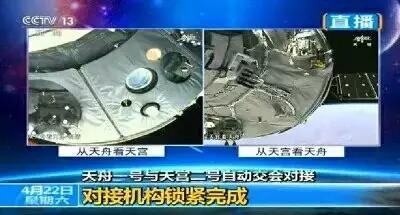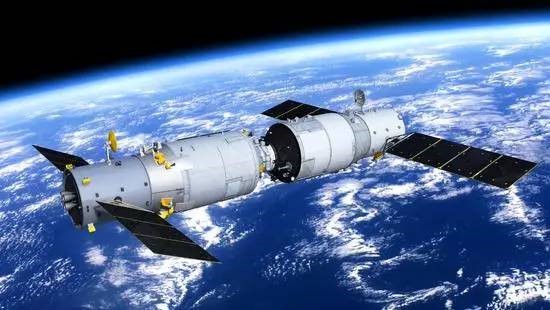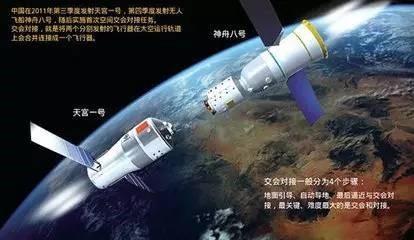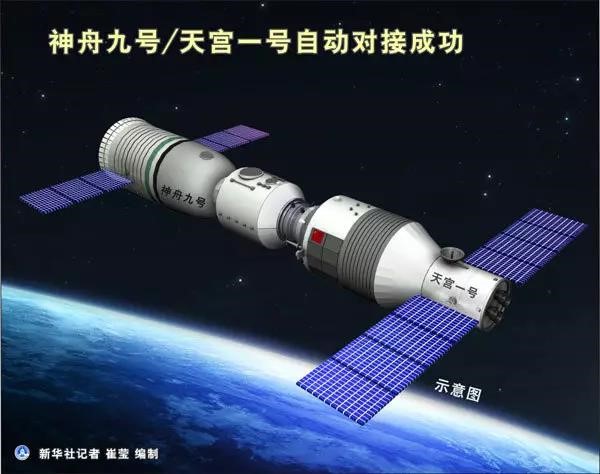Radar Signal Processing Technology of BIT Help Tianzhou and Tiangong Kiss in Space Again
Translator: News Agency of BIT, Lv Yuetong
Editor: News Center of BIT, Zhao Jie
At 12:23pm on April 22th, after two-days orbiting, cargo spacecraft Tianzhou-1 complete the first automated rendezvous on the preset procedure and docking successfully with orbiting space laboratory Tiangong-2. Microwave radar signal processor Tianzhou-1 and microwave transponder signal processor Tiangong-2 developed by professor Wu Siliang and Cui Wei from electronics for aeronautics and astronautics research team of School of Electronic and Information Engineering of Beijing Institute of Technology (BIT) can provide Tianzhou and Tiangong precise relative locations and motion parameters measurement information, which will guide Tianzhou finishing the third time Space kiss with Tiangong.

The Space Kiss of Tianzhou-1 and Tiangong-1


Tianzhou-1 cargo spaceship
According to team leader professor Wu, microwave radar signal processor Tianzhou-1 and microwave transponder signal processor Tiangong-2 are the second version of microwave rendezvous and docking radars. Compared with the first version, the second version products applied to Tianzhou-1 and Tiangong-2 this time have a new development.
According to professor Cui Wei, ‘two-way communication function has been added to the products to make sure that Tianzhou-1 can have real-time transmission of information with Tiangong-2 in rendezvous and docking mission. At the same time, the second version products will be smaller, tighter and have less power consumption by design optimization.’

docking simulation diagram of Tianzhou-1 and Tiangong-2
For a long time, BIT has always been aiming at national great strategic demand, attaching great importance to academic research, sparing no effort to promote the space industry of our country. The microwave radar signal processor and microwave transponder signal processor developed by electronics for aeronautics and astronautics research team have been applied to all previous docking mission including Shenzhou 8, Shenzhou 9 ,Shenzhou 10, Tiangong-1, Shenzhou11 and Tiangong-2. Now, the team is developing signal processors of space station program and the three-step moon mission, which will make contributions to subsequent projects construction.
In the history of space industry of our country, BITers applied theory to practice, produced products according to the scheme and set high standards like zero tolerance of failure for themselves, which marks the national mission that BIT shouldered and profound content of insisting war industry spirit. All these have helped BIT leave a string of solid footprint in the field of science.
When applauding for the successful docking between Tiangong and Tianzhou, let’s go back through the remarkable contributions of BIT in key links of rendezvous and docking technology of manned space flight these years.

On the morning of November 3rd, 2011, after chasing target-spacecraft Tiangong-1 for about 1.3 million kilometers, Shenzhou-8 spaceship embraced Tiangong-1 tightly in the vast space, which meant the first rendezvous and docking mission of the manned spaceflight engineering projects was completed successfully.It is proud that microwave radar signal processor and microwave transponder signal processor that developed by the research group of Professor Wu Siliang from Institute of Radar Techniques of BIT made an outstanding performance. Microwave radar signal processor and microwave transponder signal processor have formed stable tracking of Shenzhou-8 spaceship since it is 217 kilometers away from Tiangong-1 until docking ring contact. It provided relative location and motion parameter measurement information of two aircrafts and contributed to success of the test. This was the second time that Doppler shift based on phase difference measurement has been applied to the field of high-precision relative positioning for cooperative target in space after being applied to the missile radio vector miss distance measurement.

After applied to rendezvous and docking mission between Shenzhou-8 and Tiangong-1, both microwave radar signal processor and microwave transponder signal processor that developed by the research group of Professor Wu from Institute of Radar Techniques of BIT worked reliably and stably in three missions of automatic rendezvous and docking, manual rendezvous and docking and manual separation between Shenzhou-9 and Tiangong-1.Besides, microwave radar signal processor and microwave transponder signal processor precisely provided relative location and motion parameter measurement information of two aircrafts, which contributed to the first successful manned rendezvous and docking mission.

On the morning of June 25th, 2013, the assemblies of Tiangong-1 and Shenzhou-10 separated successfully. Shenzhou-10 flied from the top of Tiangong-1 to the rear to finish close range rendezvous. This was the first time that China carried out spacecraft orbit intersection test successfully and the last time that Tiangong-1 cooperated with Shenzhou spaceship to rehearse their missions since Tianzhou-1 was launched into space in September 2011. Before that, Shenzhou-10 have had automatic rendezvous and docking and manual rendezvous and docking with Tiangong-1.It’s the microwave radar signal processor and microwave transponder signal processor that developed by the research group of Professor Wu from Institute of Radar Techniques of BIT that made all three missions possible.

